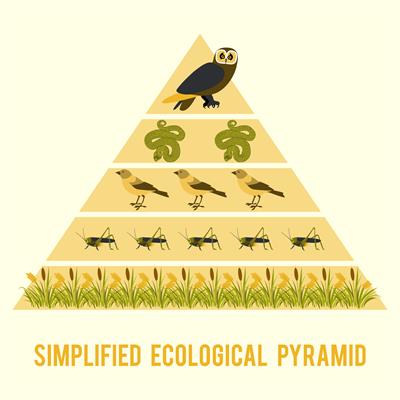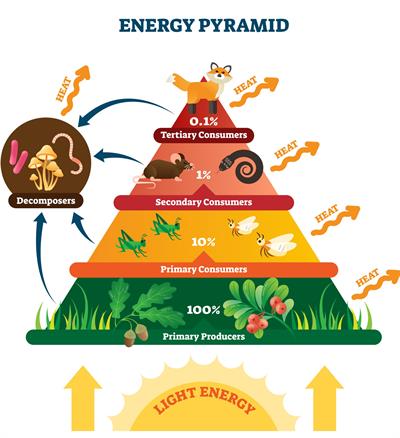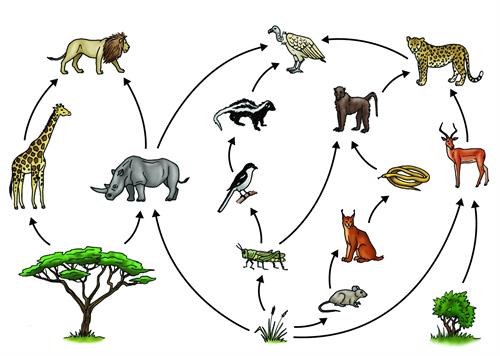PDF chapter test TRY NOW
Trophic levels:
Energy is passed from producer to consumers. The producers are the plants which are autotrophs (produce their own food).
- Animals that eat plants are called the primary consumers.
- Animals which eat primary consumers are called as secondary consumers.
- Animals which consume the secondary consumers (predators) are called the tertiary consumers.
- There are larger predators which eat tertiary consumers. They are called as the quaternary consumers.
Each level present in the food chain is called a trophic level.

Ecological pyramid
The living organisms use 90\% of the energy obtained from food for life processes.
Only about 10\% of the energy goes to the next trophic level or to the organism when it gets eaten.
Loss of energy at each levels can be shown as an energy pyramid.

Energy Pyramid
In the food chain, there is the presence of a top-level predator that has no natural predator. In an aquatic ecosystem, there is no natural predator for an alligator. While in a forest there are no natural predators for tigers or fox.
Importance of food chain:
1. Helps to understand the feeding relationship and interaction between organisms in an ecosystem.
2. Energy flow and nutrient calculation in an ecosystem can be estimated.
3. Movement of toxic substances and the impact of pollution can be studied.
Food web:
Consumers have different sources of food in an ecosystem and do not rely only on one species for food. If we put all food chains present in an ecosystem together, then we end up with interconnected food chains, called a food web.
A food web is useful to show many different feeding relationships that are present between other species within an ecosystem.

Food web
Reference:
https://www.flickr.com/photos/121935927@N06/13578885414
